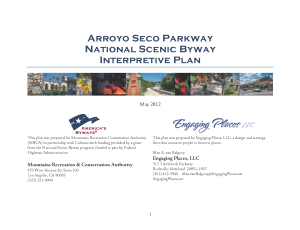This 1:30 video features a video projected on a table showing scholars at work behind-the-scenes as part of a small exhibition on research and conservation at the Huntington Library, Art Collections, and Botanical Gardens in San Marino, California. It was installed a few years ago in the former board room of the historic library building and is another example of the expanded ways that video is being used in exhibitions (it’s not just a tv monitor anymore).
You may notice that there’s no one in the exhibition. I do deliberately take photos of exhibitions without people so that the entire design can be seen, however, I also take them with people to show how they interact with the content. In this instance, it was a busy day but very few people wandered in and when they did, it was a quick glance and then back out–despite the cleverness of the video projection. I can perhaps guess at the reasons—located off to the side, uninteresting topic, and passive experience—but it could also be a lost opportunity to do something more intriguing and distinctive.
Look again at the video. What’s distinctive about the exhibition? Continue reading


